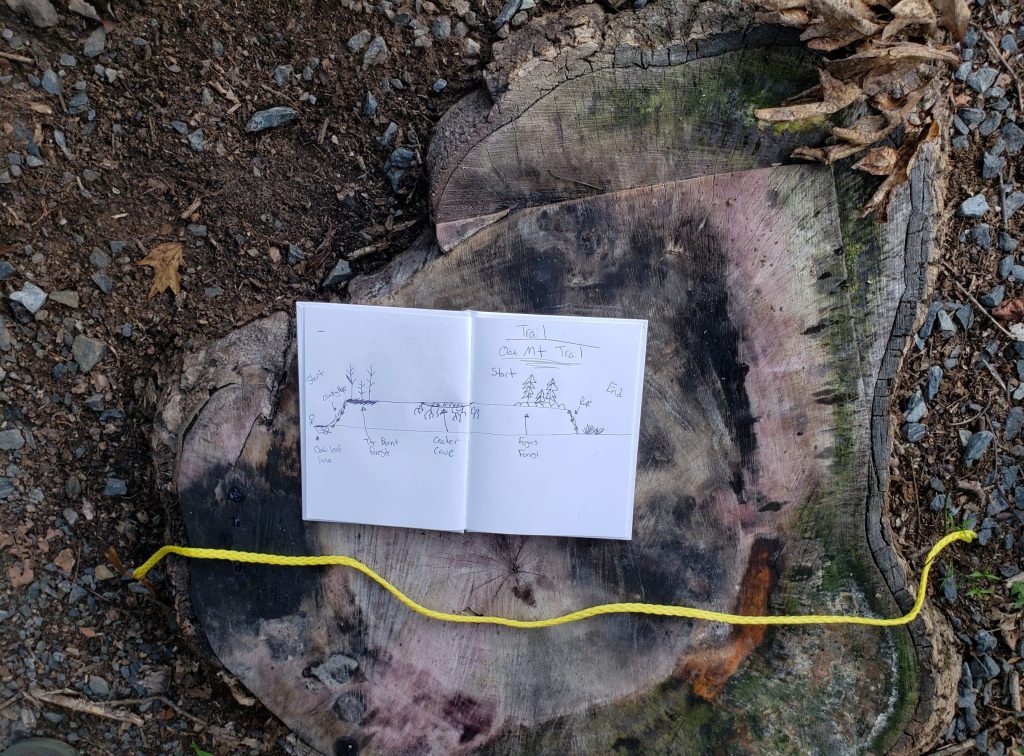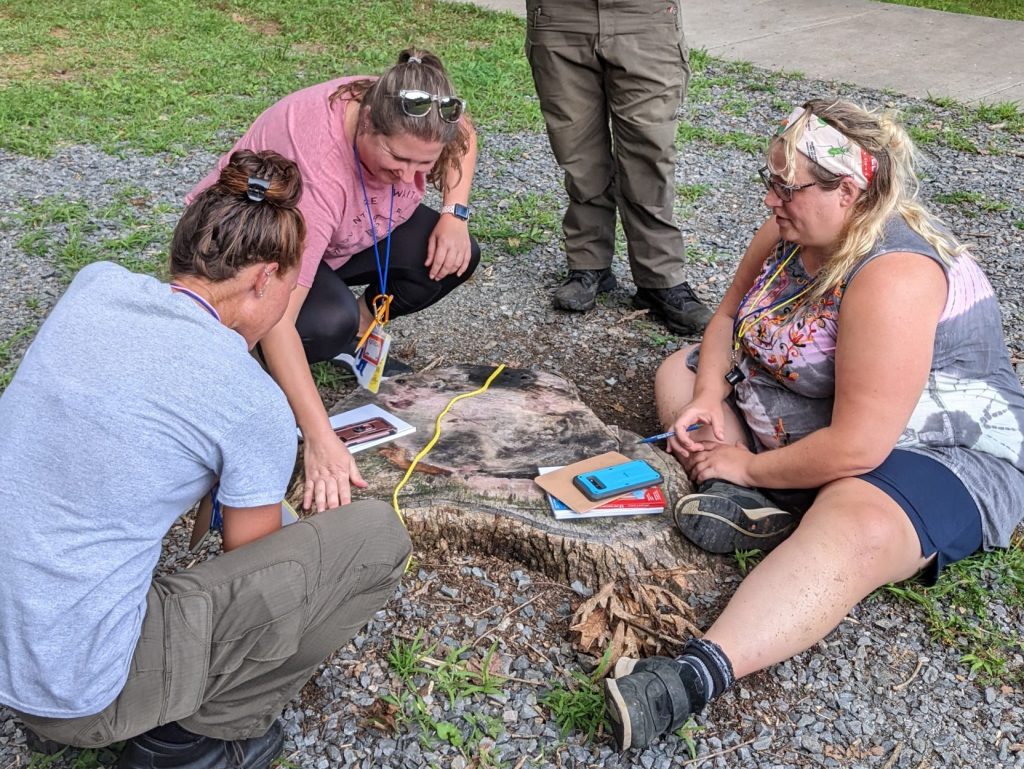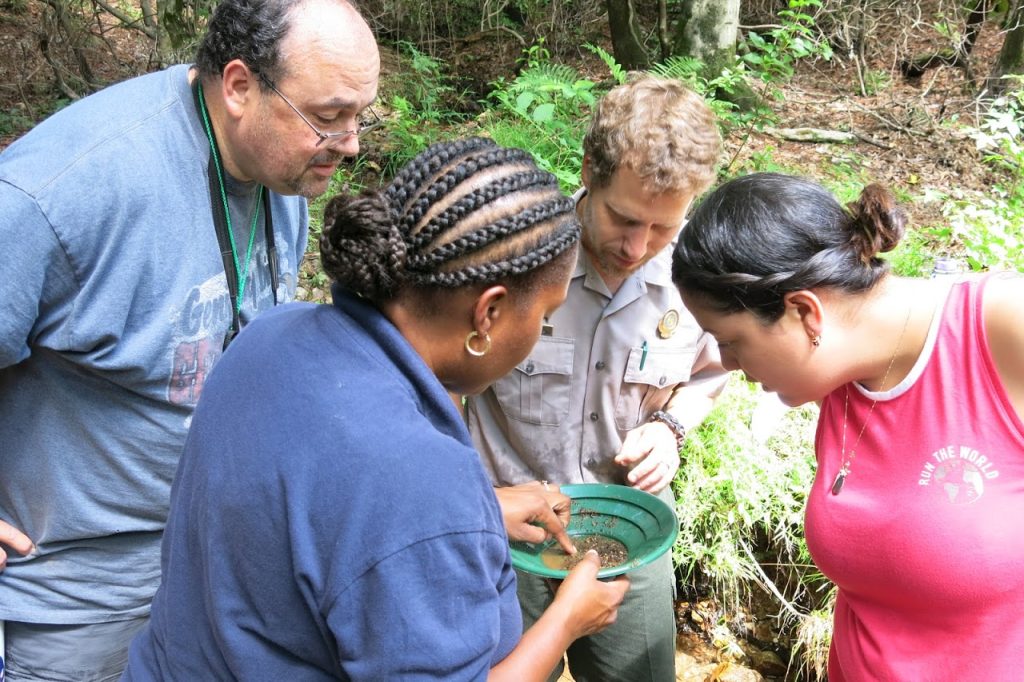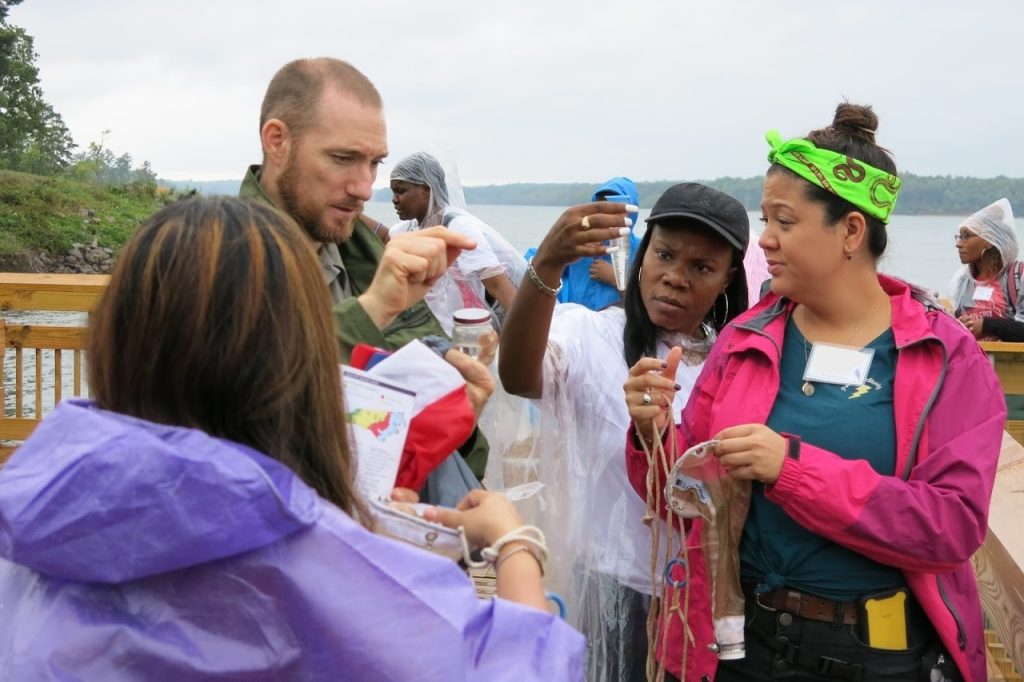IE program brings N.C. students and teachers into state parks for meaningful outdoor science learning
April 1, 2024
During a workshop, a group of elementary school teachers and park rangers are given a small piece of string–about two feet long–that they are instructed to place somewhere in the natural space outside the classroom to create a “nano-trail” for a pretend tiny creature. The group then creates a written and illustrated “trail guide” interpreting the unique natural features along the trail before guiding other groups to see the sights along their trail.
“The creativity and imagination that the teachers and rangers demonstrate is amazing,” said Sarah Yelton, who facilitated the exercise. “They bring so many different subject areas to life when using the natural world as the context for learning.”

This activity is conducted as part of a state-wide initiative called the Schools in Parks Collaborative, which is designed to bring together elementary teachers and park rangers to create outdoor learning experiences for students. In state parks and on school grounds, teachers and rangers are maximizing opportunities to connect to nature, enhancing science learning and fostering a sense of wonder throughout the school year.
Yelton, the environmental education and citizen science program manager for the Center for Public Engagement with Science (CPES) at the UNC Institute for the Environment, has led the Collaborative in partnership with North Carolina State Parks since its inception in 2019 and says it is one of her most rewarding activities. North Carolina State Parks provides funding to CPES to support the Schools in Parks Collaborative.

“It’s really powerful for students who may not have regular opportunities to connect to nature, and also for the teachers that are not used to going outside of their classroom as often,” said Yelton. “Some of our teachers have been surprised at how much more engaged and curious their students are when they take science learning outdoors.”
During the year-long Collaborative, teachers and park rangers participate in workshops where hands-on activities are modeled for use on field trips. Teachers and rangers also partner to develop lessons that can be used to support student learning in state parks over the course of the school year.
Yelton and Taylor Prichard, an environmental education specialist in CPES, work hand-in-hand with the education team based in N.C. State Parks to enable year-round engagement for educators, sharing resources, facilitating access to a peer network for outdoor learning, and providing continuing education credits, stipends and support in planning a state park field trip during the school year.
During events, the CPES duo helps teachers understand how to connect with and use the natural spaces around them for learning, and helps the rangers understand how they can best facilitate learning that connects with curriculum objectives in their parks.

Kristin Owens-White, an environmental science teacher at South Stanly Middle School in Norwood, North Carolina, was a participant in the 2022-2023 cohort of the Schools in Parks Collaborative. After her experience, she completed her N.C. Environmental Education (EE) certification and created an outdoor environmental STEM class at her school, which began this year.
“The biggest message I want the students to get when they leave is that human impacts make a difference in the environment,” Owens-White said. “We spend lots of time outdoors but there’s a lesson behind it.”
As teachers and park rangers work together during Collaboratives, they exchange knowledge and play on their strengths. Through this merging of environmental and educational expertise, they are able to create experiences for students that amplify the learning that’s taking place inside the classroom. All of this work contributes to the end goal—getting more students outside.
Field trips can range from wandering in the creek catching crayfish to paddling a canoe in the middle of the lake while watching bald eagles, but all aim to nurture the understanding and appreciation of the outdoors. While some students and teachers come into the experience with caution, they almost always leave eager to learn more.
“What I love hearing most is ‘this was the best day ever’,” said Sean Higgins, education manager with North Carolina State Parks. “Seeing them notice something about the natural world that was something they never noticed before and getting excited about that is really special.”
As the Schools in Parks program continues to thrive, the hope is that everyone will start to understand that nature’s beauty can be found both at state parks and in the schoolyard.
“I think by spending time outdoors, they’ll hopefully develop a lifelong appreciation of it,” Higgins said. “Our use of our devices isn’t going away, but our time spent outdoors and appreciating everything the Earth has to offer shouldn’t be going away either.”
Story by Abigail Keller
Abigail Keller is a senior at UNC-Chapel Hill’s Hussman School of Journalism and Media and is working as a communications intern with the Institute for the Environment during the 2023-24 school year. Abigail is a member of Epsilon Eta, which is Carolina’s environmental honors fraternity.
